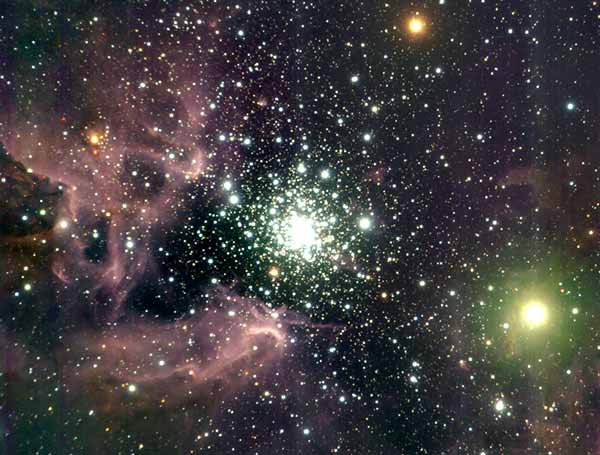
Open Cluster NGC 3603 |
Trumpler and Shapley |
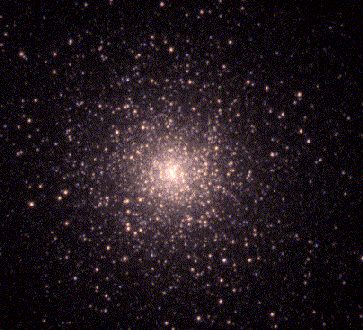
Globular Cluster M15 |

Open Cluster NGC 3603 |
Trumpler and Shapley |

Globular Cluster M15 |
We are not at the center of the Milky Way galaxy. Herschel and Kapteyn were unaware of the existence of dust in the interstellar medium (ISM).
Dust only lets us see out to a few kiloparsecs (less than 5 - 10,000 light years into the Milky Way galaxy in optical light -- 1 parsec = 3.3 light years). This means that
Below we show a picture of the disk of the Milky Way in optical light. Note the dark bands which run through the Milky Way and the dark blemishes embedded in the disk. These arise because of obscuration of distant stars by dust. The picture on the right shows the Eagle Nebula, an interstellar gas cloud known as an HII region (region of ionized hydrogen gas). The dark bands in the Eagle Nebula are caused by obscuration from dust.
 |
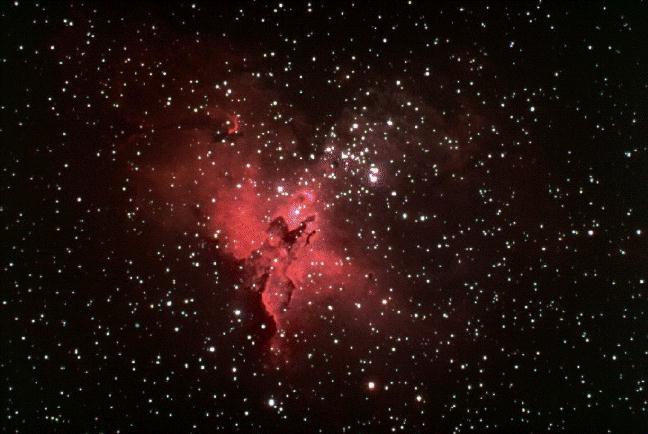 |
Below is a picture of the disk of the Milky Way galaxy taken in infrared light. At these wavelngths dust does not obscure objects, rather it radiates light (infrared, IR, light). This is understand because dust absorbs and scatters optical (visible light), the electromagnetic radiation to which our eyes are sensitive, and sheds this absorbed energy by re-radiating it in the IR portion of the electromagnetic spectrum.

|
What is our Location in the Milky Way Galaxy? This issue was resolved by Shapley through observations of the ancient star clusters known as globular clusters. Globular clusters are believed to have formed very early in the history of the Milky Way and reflect the initial shape of the cloud which formed the Galaxy (and, as such, are distributed in a spherical distribution about the center of the Galaxy). |

|
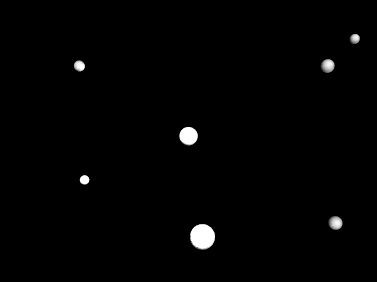 RR Lryrae in M4 | Using the variable stars known as RR Lyrae stars as distance indicators, Shapley determined the distribution of globular clusters in the Milky Way galaxy and demonstrated that the Sun was not in the center of the Milky Way, it was in the disk of the Galaxy. He found that: |
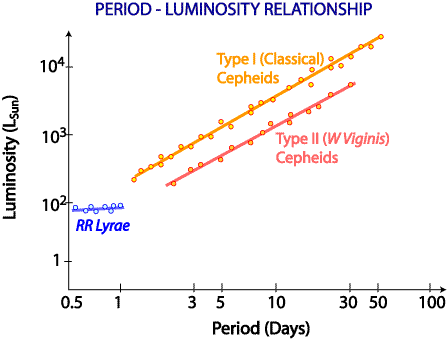 |
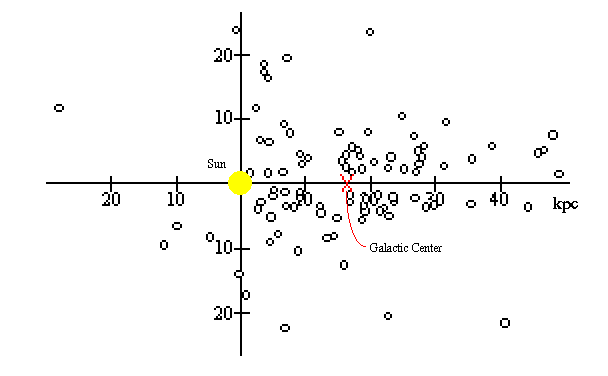
Comment--Variable stars will be an important topic later as they serve as among the most reliable of distance indicators. The most important class of variable stars are the Cepheid variables which are evolved stars which are undergoing pulsations and periodically varying in luminosity. The key observational fact about them is that their intrinsic average luminosities are related to their pulsation periods For example, see Cepheid variables in M100. and an animation of the Cepheid variables in M100.